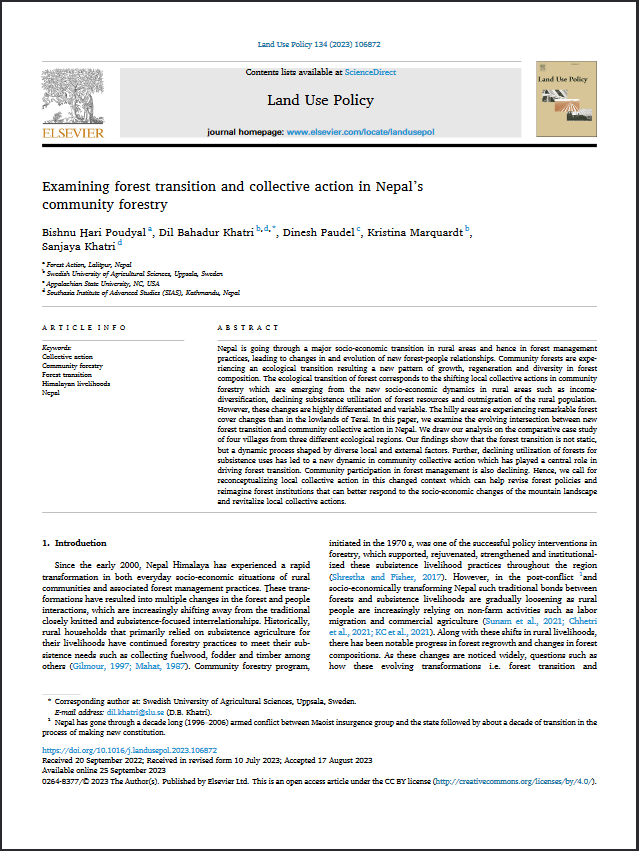Published online:25 November 2019
Authors: Sony Baral,Bijendra Basnyat,Kalyan Gauli,Ambika Paudel,Rachana Upadhyaya,Yajina Prasad Timilsina and Harlad Vacik
Abstract:
Fuelwood is the primary source of energy in Nepal, where 87.1% of the total energy is derived from wood, making it the major source for carbon emissions. This study explores the factors affecting the fuelwood consumption, the amount of carbon emissions including the potential for carbon sequestration in community forests, taking a case study of Kankali Community Forest Users Group (CFUG) of Chitwan district of Nepal. Interviews with 217 households revealed that 60% of the households still depend on fuelwood for cooking, which apparently emits approximately 13.68 tons of carbon dioxide annually. The emission, however, varies with the economic status of the households; poor households rely exclusively on fuelwood for cooking and therefore emit greater amount of carbon. Similarly, the carbon emission was also found to be directly proportional to the family size and livestock holding, and inversely proportional to landholding and per capita income. A more conservation-oriented forest management along with activities to support livelihood has contributed to lower carbon emissions. Interestingly, the poverty-energy trap seemed to have a distinct gender dimension. We argue that CFUGs need to invest in income-generating activities for local users, and especially for women of low-income households, in order to reduce current carbon emission.
Available at: https://www.mdpi.com/1996-1073/12/23/4492/htm








